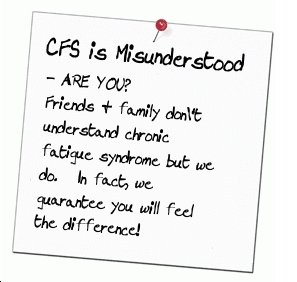10 Types Of Meditation That Help Stress And Anxiety
Mindfulness meditation is the practice of observing the present moment without judgment. You simply notice your breath, body sensations, thoughts, and emotions as they arise — not labeling them as “good” or “bad,” but just as they are.
Stress often lives in the future or the past — worrying about what might happen or replaying what already did. Mindfulness anchors you back into the now, where the body can finally relax.
By grounding your attention in the present, you retrain your nervous system to respond instead of react.
How to practice:
• Sit comfortably and close your eyes.
• Focus on your breath — the cool air in, the warm air out.
• When your mind wanders (and it will), gently bring it back to the breath.
• Even 5 minutes a day creates noticeable calm.
Try this reflection:
“What would it feel like to be completely here, in this moment, without needing to change anything?”
Guided Visualization — The Imagination’s Calm Place
Guided visualization involves using mental imagery to create peaceful experiences in your mind — walking through a forest, sitting on a beach, or watching clouds drift by.
Your brain doesn’t always know the difference between real and vividly imagined. When you visualize calming scenes, your body’s stress response (cortisol, adrenaline) decreases, and you activate your parasympathetic nervous system — the “rest and digest” state.
How to practice:
• Find a guided audio meditation or record your own.
• Close your eyes and picture a place that brings you peace.
• Engage all senses: smell the ocean, feel the sand, hear the waves.
• Stay there for a few minutes, breathing naturally.
Breath Awareness Meditation
This is the classic “breathing meditation.” You focus entirely on your breath, its rhythm, depth, and movement, as an anchor for awareness.
When you’re stressed, your breathing becomes shallow and rapid, which signals your brain that danger is near.
Conscious breathing flips the switch back to calm, reducing heart rate and blood pressure almost instantly.
How to practice:
• Inhale slowly for a count of four.
• Hold for one beat.
• Exhale gently for a count of six.
• Repeat for several minutes, feeling your body soften with each exhale.
Loving-Kindness Meditation (Metta)
A practice of sending well-wishes to yourself and others. You silently repeat phrases like:
“May I be safe. May I be happy. May I be healthy. May I live with ease.”
Stress shrinks your perspective; it narrows you into survival mode. Loving-kindness expands the heart and softens the inner critic.
Studies show it reduces self-judgment and boosts positive emotions, which counteract stress hormones.
How to practice:
• Sit quietly and focus on your heart area.
• Repeat loving phrases to yourself, then extend them to loved ones, acquaintances, and eventually even people you struggle with.
• Feel the warmth spread from your chest outward.
Yoga Nidra — The Deepest Rest
A guided, full-body relaxation practice sometimes called “yogic sleep.” You lie down and follow a voice through stages of awareness between wakefulness and sleep.
Why it helps:
Yoga Nidra activates deep rest without losing consciousness. It reduces anxiety, insomnia, and chronic stress. Some say 30 minutes of Yoga Nidra feels like 3 hours of deep sleep.
How to practice:
• Lie comfortably on your back.
• Follow a recorded script that guides you through breath awareness, body relaxation, and visualization.
• Stay awake but relaxed.
Transcendental Meditation (TM) — Quieting the Mind Beyond Thought
A structured meditation using a silent mantra (a word or sound repeated mentally) to go beyond thought. It’s practiced for 20 minutes twice a day.
TM allows the mind to naturally settle into a state of stillness. Numerous studies link it to lowered cortisol, improved focus, and greater emotional stability. For people overwhelmed by racing thoughts, TM can feel like opening a window in a stuffy room.
How to practice:
• Sit comfortably with eyes closed.
• Silently repeat your mantra — a word like “So-ham” or one given by a teacher.
• When the mind wanders, return to the mantra gently.
Walking Meditation — Movement That Heals the Mind
A mindful, slow, intentional way of walking where each step becomes a meditation. You synchronize your breath with your pace, noticing the sensations in your feet and legs.
Physical movement helps discharge nervous energy built up by stress. Walking meditation is ideal for those who struggle to sit still. It merges mindfulness with movement — grounding you both mentally and physically.
How to practice:
• Choose a quiet path or park.
• Walk slowly, feeling each step.
• Breathe naturally, matching steps to your inhale and exhale.
• With each step, silently say: “Arriving” (inhale), “Here” (exhale).
Mantra Meditation — Words That Rewire the Mind
Mantra meditation involves repeating a sacred word, phrase, or sound such as “Om,” “Peace,” or “I am calm” to focus the mind.
When your mind is filled with one soothing sound, there’s no room for stressful chatter. Over time, your subconscious begins to associate the mantra with tranquility, creating a conditioned response to relax.
How to practice:
• Choose a simple word or phrase that brings comfort.
• Repeat it quietly during meditation.
• Feel its vibration resonate in your body.
• If the mind wanders, gently return to the mantra.
Progressive Muscle Relaxation (PMR) — The Body’s Reset Button
A method of tensing and relaxing muscle groups systematically, helping you become aware of the difference between tension and release.
Stress often hides in the body. PMR discharges that physical stress, triggering the relaxation response. It’s great for people with anxiety, chronic pain, or trouble sleeping.
How to practice:
• Start at your feet: tense the muscles for 5 seconds, then release.
• Move up through your calves, thighs, abdomen, chest, shoulders, face.
• Feel the waves of relaxation spread.
Tip: Pair PMR with slow breathing or soft music for deeper calm.
Candle Gazing (Trataka) — Focusing the Mind Through the Flame
You focus your gaze on a single candle flame without blinking until your eyes water slightly, then close them and visualize the flame within.
Trataka trains concentration and quiets restless mental energy. The gentle flicker of the flame engages the parasympathetic system, slowing down the mind’s noise.
How to practice:
• Sit in a dark room with a candle at eye level.
• Gaze softly at the flame for 1–2 minutes.
• Close your eyes and see the flame’s image inside your mind.
• Repeat for 5–10 minutes.
Gratitude Meditation — Rewiring the Brain for Joy
A focused meditation on things, people, or moments you’re grateful for — cultivating appreciation as a mental habit.
Gratitude activates brain regions associated with happiness and reduces stress-related activity in the amygdala. It shifts your attention from what’s missing to what’s present, dissolving emotional tension.
How to practice:
• Close your eyes and recall three things you’re grateful for today.
• Feel the warmth of appreciation spread through your heart.
• Visualize each blessing vividly.
• Whisper, “Thank you,” slowly and sincerely.
Related Reading: Stress Management Guide
Warren Tattersall has been a full time nutritional consultant for over 35 years and works with people all over the world to help them improve their health, increase their personal energy levels and to use supplements to assist with diet related health issues.
Just send him a note on the form here - Contact Us - to request a personal no obligation one-on-one consultation with Warren
New order website for Australian customers:
For all the subscribers that don't want to talk to anyone, just want to buy their products direct, I'm creating these websites that process orders for you once you register with them.
The Australia GoHerbalifeSite is the first one completed, other countries will come along soon...
Australian customers: Click this link or tap on the banner below to check it out and get registered to place your orders... and remember your 15% discount code: HLIntro15

Did you find this post fun, informative and useful? If so, please share it with others!
If you have a comment, question or suggestion, please leave a comment below!
the A to Z directory of dealing with Health Problems & Self Care Strategies for natural remedies to your health issues.

Subscribe to get your weekly "Health Success Magazine" with a new complete & comprehensive Health Report in every edition!

to “Your Health Success”
our weekly F’R’E’E’ Newsletter
If you would like a free no-obligation private consultation or to contact Warren Tattersall for more information, please click here >> Contact Us

Click the books above to learn more about how we treat CFS naturally, to get your life back!
You will find many assorted Health Reports available for download free to you on this website!
Our free Health Success Reports are each available for you to download when you subscribe to receive them and their 7 part eCourse.
You can unsubscribe at any time, but we are sure you will want to receive all the email lessons of these informative ecourses.
Read more HERE to select the REPORT subjects of most interest (or concern) to you.









